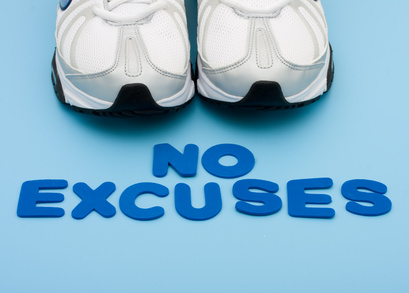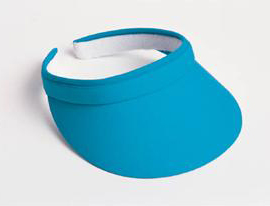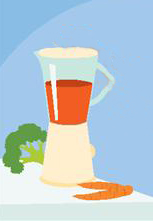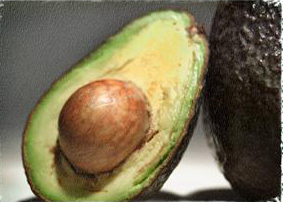Fitness By Influence: How To Motivate At Home Fitness By Example
FITNESS BY INFLUENCE: HOW TO MOTIVATE AT HOME FITNESS BY EXAMPLE (ISSUE 26)
by Diane Gold
Everybody’s talking about fitness, motivation, abs, fruits and veggies, muscle tone. We see videos and photos of models who are size 2s and, if they are very tall, 4s. So where does that leave girls who are size 18 on their thinnest day?
At home, whether we realize it or not, we learn from the habits of our family. When our mom does no physical exercise, we don’t criticize her for it (although it never hurts to talk about it); we probably think,
“Oh, she’s not working out because she is getting older.”
When exercise is not done by one of our main role models, our mom, we are being taught that it is not important. In this day and age, we know it is necessary for health. The truth, obvious by looking around at all the senior sports programs and the 50-year-olds who look 35, is that fitness becomes more important with age. And by being an example of fitness and health, we have big influence over our daughters. We always need to be sensitive to our daughters and don’t want to boast or swagger if our daughters are struggling with weight and exercise. That is why the below actions use relatively easy action steps.
With that said, we are going to go over 3 simple non-earth shattering ways that can jump start fitness by example. They require no huge sacrifices, are best implemented together and are common sense ways we can add to our lives without much effort on our part or the part of our daughters.
EXERCISE: ROUND THE BLOCK WALK
 As a mom, we can tell our daughter that we want to hear about her day, but that we are starting a new fitness program that requires walking around the block 1 time. We can say we’d like to hear about her day while we are doing that walk. If she is under 10, we can probably say,
As a mom, we can tell our daughter that we want to hear about her day, but that we are starting a new fitness program that requires walking around the block 1 time. We can say we’d like to hear about her day while we are doing that walk. If she is under 10, we can probably say,
“We’re going for a 1 walk around the block.”
If she’s between 10 and 13, we might say it a different way but can usually get it to happen.
If she’s over 13, we may have some resistance. We can keep asking her for 31 days straight to see whether, one day, she says yes. While she is saying no, we have to go out and do the walk. It’s not a marathon, remember. It’s only a block. If it’s a country road with no block divisions, approximate the distance. This whole time, she will see that we are going out and doing 1 block only. This way, she will know she can do it and will grab motivation from our perseverance.
If medical issues preclude this activity, we can spend the same amount of time inside moving and talking with our daughter. If psychological issues make our daughter say no because it is too far, we can make adjustments.
When she says yes and our daughter agrees to walk, we need to be observant. When we see that our daughter is slowing down and does not want to continue, don’t continue so that we get our work out in. Remember this particular activity is for our daughters with the added benefit of helping ourselves.
We can do a little coaching to see whether we can get her to walk a little more. The next time, she might get further before she says she’s had it. The time after that, she might go all the way. If she won’t budge, we can talk while heading back home.
MOTIVATION: FITNESS ACCESSORY
 How often do our daughters want to buy something for themselves? When our daughters are carrying extra weight, they might not be interested in new clothing because they may not like how it looks on them. In the coming weeks, we will have a world renowned fashion expert talk about the clothing she has created because we are all beautiful.
How often do our daughters want to buy something for themselves? When our daughters are carrying extra weight, they might not be interested in new clothing because they may not like how it looks on them. In the coming weeks, we will have a world renowned fashion expert talk about the clothing she has created because we are all beautiful.
In the meantime, let’s go to the sports store with our daughters. An alternative, depending upon where we live, would be to go to a wholesale or department store. On the way to the store, to build anticipation and to quench curiosity, we can say we wanted to get an accessory for ourselves and wanted our daughter’s opinion. Then, when we walk over to sweat bands, sun visors, wrist bands, anything that does not require trying on over the body, there will be no threat to our daughters.
Asking for our daughter’s opinion makes them important, and they will probably want to help with our workout. Don’t be surprised if requests to try on clothing come up. Depending upon the family budget, this might encouraged, even though this buying trip’s purpose is to get a colorful, new accessory for the walk. Sometimes, wanting to wear the accessory will be enough to get our daughters to say yes to everything.
IMPORTANT CALORIES: VEGETABLE JUICING
A simple food preparation is juicing, not a new concept, and one where there has never been a negative word about its benefit. In any diet, adding a little juice to the day is a healthy way to get vitamins, minerals, nutrients. If there is a lot of resistance to vegetable juice, mix it with apple.
I remember going to brunch the morning after a family celebration. The hotel buffet was serving wheatgrass shots – but they were half apple juice. One of the main reasons to drink wheatgrass juice is to utilize the live nutrients which work best on an empty stomach and without another ingredient. I had never heard of diva wheatgrass juice, which, of course, thwarts much of the mission. But, better to have diluted wheatgrass juice than none at all.
OK, I’m not suggesting wheatgrass juice as a first juice with daughter, although I do recommend it to everyone. I am suggesting gentle juicing, which is the juicing of items whose taste we already know and enjoy. Adding juicing to our kitchen teaches our daughters healthy food preparation.
Did you know that as a result of eating raw foods such as juicing, our tongue receptors become more sensitive? This is a good thing and can train us to recognize food additives and chemical substitutes.
Here’s a recipe for rhythmic carrot-orange juice (rhythmic because it has a beet). To begin, start with once a week, 4 ounces for ourselves and 2 ounces for our daughters. This should begin at the same convenient time every week. We must keep at it so that our daughters see consistent, healthy eating habits. Our persistence will be effective whether our daughters watch or partake. And it will be healthy for us in the process.
Rhythmic Carrot-Orange Juice (with a Beet) by Anahad O’Connor and Dave Lieberman’s 10 Things book. The number of units of the raw ingredient is dependent upon the size of each unit.
 2 2/3 ounces of carrot juice
2 2/3 ounces of carrot juice
2 ounces of beet juice
1 1/3 ounces of fresh orange juice
Stir the juices together and serve.
(Often, to get one ounce of carrot juice, 2 carrots would be used. Let us know how many you needed.)
CONCLUSION
The beautiful thing about leading by example is what a profound but subtle effect it can have. When we set up a way to work together with our daughters on activities that are not too demanding, we will get our daughter’s thinking. At least, our daughters will know that we care about them.
As mentioned earlier, it is very important not to compete by showing off the progress we have made, unless our daughters are working right alongside of us and succeeding, too. We want to encourage, not discourage. The purpose of these small actions is for our daughters, even though the exercise and the juice will serve us well.
It’s sometimes difficult to see how difficult it might be for our daughters to move, motivate, act on their own behalf. If we invite exercise, create motivation and do family juicing with love, our daughters will be exposed to positive influence that could happily impact their fitness.
FEEDBACK
Please leave your comments below. We value them. You can also converse with us on Twitter @warriorsoweight.
______
DIANE GOLD, AUTHOR
Diane Gold, Founder of Warriors of Weight, Moms For Healthy Daughters, is a mentor in tai chi, kung fu and meditation, a music and stress expert and a dedicated mom. She believes we are role models to our children throughout our lives. She says, “Hopefully, we are showing our true side to our daughter when we influence her, and we remember that we can always learn from our daughters.”



 I’ve always loved avocados, but it wasn’t until I finally got around to experimenting with them that I realized just how truly versatile they are. Like most Americans, I’ve been pretty narrow in my avocado repertoire, sticking to salads, sandwiches, and dips. But …there’s a wide range of uses for avocado, from serving it hot in stews and soups to making it the starting point for delicious smoothies and desserts.
I’ve always loved avocados, but it wasn’t until I finally got around to experimenting with them that I realized just how truly versatile they are. Like most Americans, I’ve been pretty narrow in my avocado repertoire, sticking to salads, sandwiches, and dips. But …there’s a wide range of uses for avocado, from serving it hot in stews and soups to making it the starting point for delicious smoothies and desserts.





